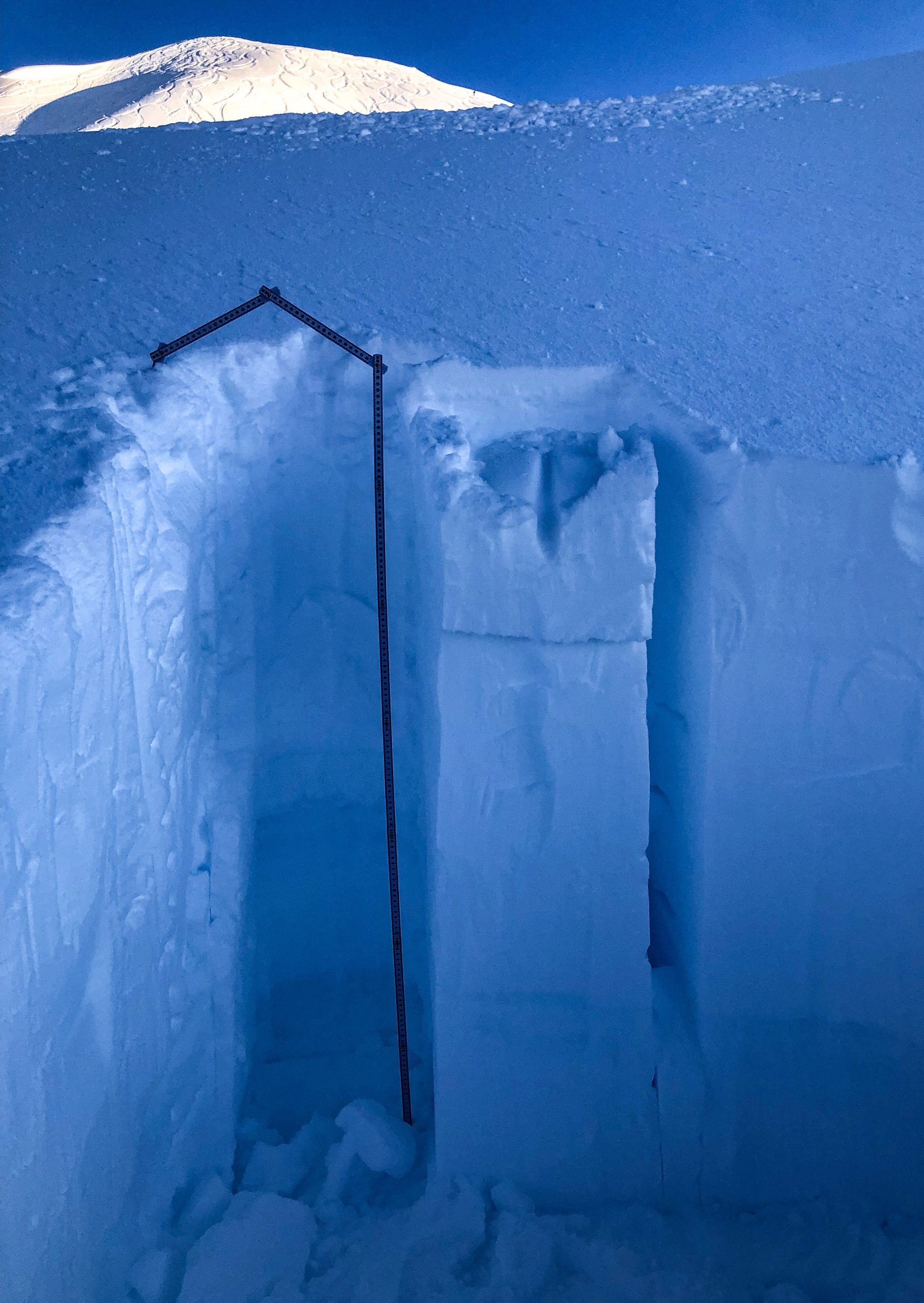The dark days…. are about to turn the corner. At 7:20pm today, the northern hemisphere will stop tilting away from the sun and back toward it. Happy Solstice everyone!
For this short day out in the mountains, triggering an avalanche at 3,000′ and below is unlikely and trending to unlikely above this. Despite ‘normal caution’, LOW danger avalanche problems stated below, we do have some information on a weak layer of snow sitting near the base of the snowpack in the high Alpine. This layer we are calling the Veteran’s Day Facets and it is sitting on a hard crust. Limited data gives us much uncertainty as to how reactive the layer is throughout the region. It is buried anywhere from 1 – 6+ feet deep due to the extensive wind effect during the early to mid-Dec storm cycles. This presents us with a lingering concern that a person could trigger a larger avalanche at the high elevations above 3,000′. The mostly likely scenario for triggering would be hitting a thin spot in the snowpack or near a rock poking through that initiates failure in the weak layer. Concern is greater where the overall snowpack is shallower- towards the southern end of Turnagain Pass, in Summit Lake and in the Crow Pass terrain just north of Girdwood.
NORMAL CAUTION avalanche concerns:
Lingering wind slabs: For anyone hitting steep chutes, spines or slopes today, watch for lingering older wind slabs that may not be well bonded with the snow underneath. Even a small wind slab can cause problems by knocking a person off their feet in steep rocky terrain.
Cornice falls: As always, give cornices a wide berth if traveling along ridgelines and limit exposure under them if traveling below.
Loose snow sluffs: The surface snow is loosening and sluffs in steep terrain were reported yesterday. Watch your sluff on steep slopes.
 Observer Eric Roberts found yesterday what we have been finding at elevations around 3,000′ and below- a stable snowpack.
Observer Eric Roberts found yesterday what we have been finding at elevations around 3,000′ and below- a stable snowpack.

 Observer Eric Roberts found yesterday what we have been finding at elevations around 3,000′ and below- a stable snowpack.
Observer Eric Roberts found yesterday what we have been finding at elevations around 3,000′ and below- a stable snowpack.  Glide cracks on north facing Corn Biscuit, pictured yesterday by observer Allen Dahl.
Glide cracks on north facing Corn Biscuit, pictured yesterday by observer Allen Dahl.  Surface hoar forming from the past two days of cold and clear weather. Photo: Allen Dahl.
Surface hoar forming from the past two days of cold and clear weather. Photo: Allen Dahl.